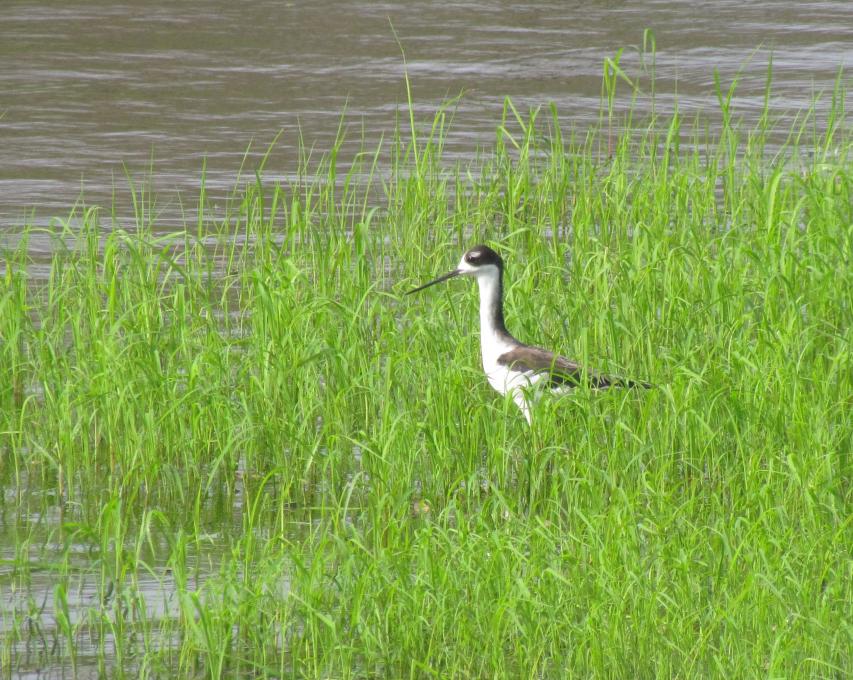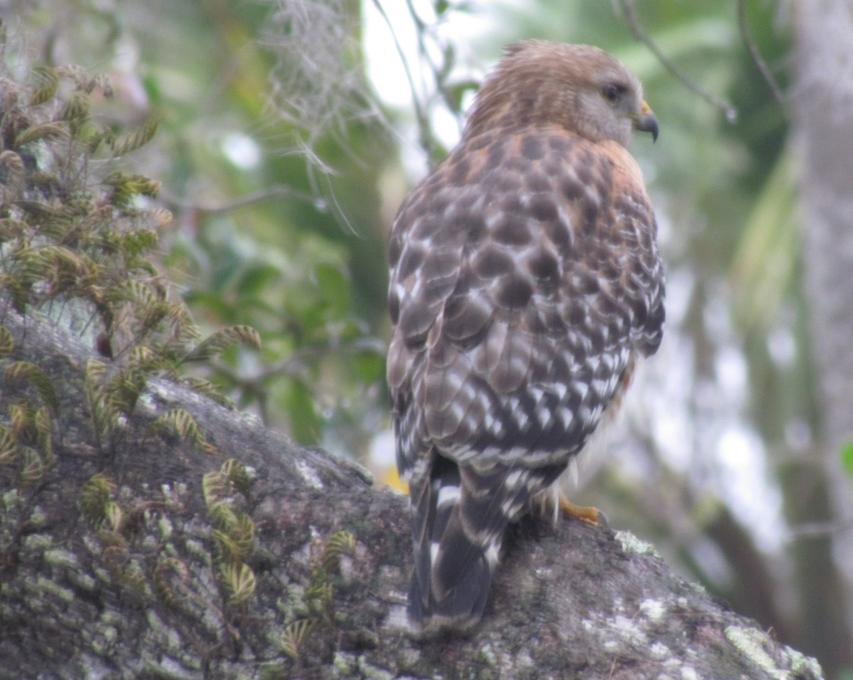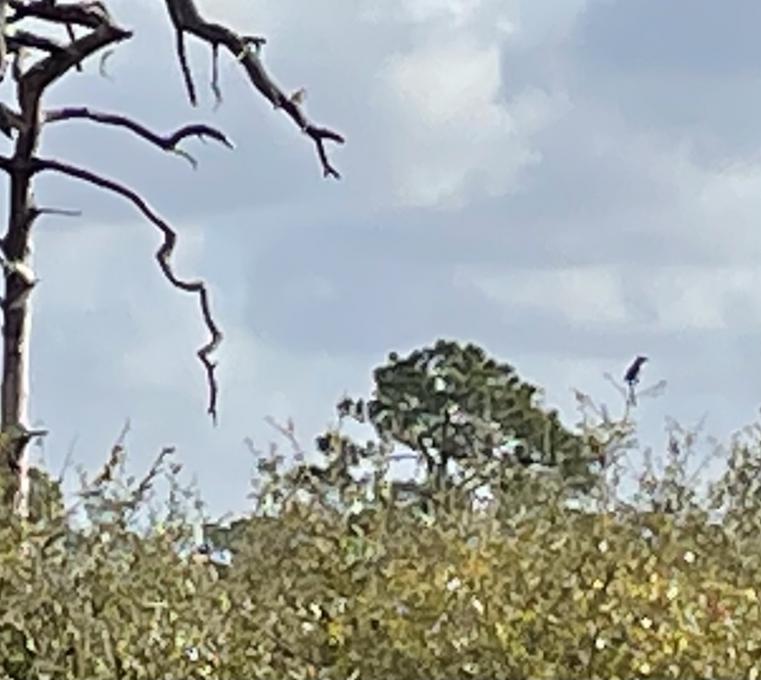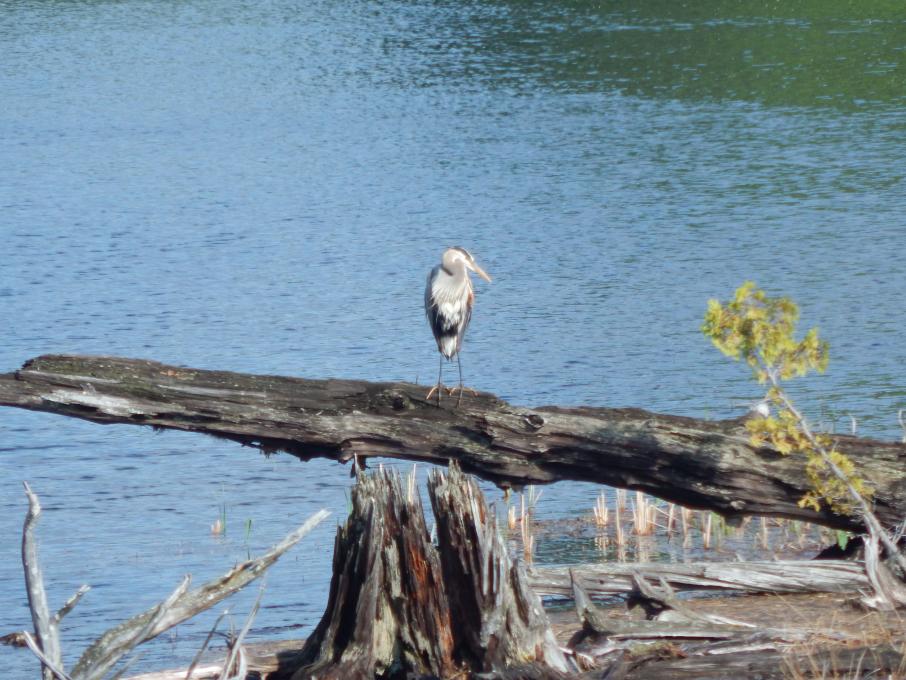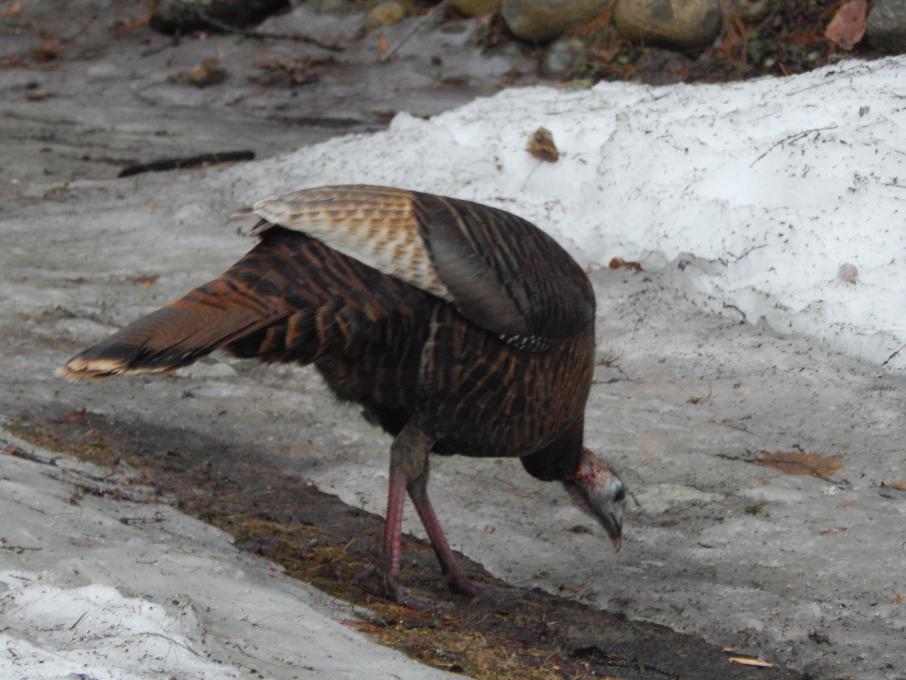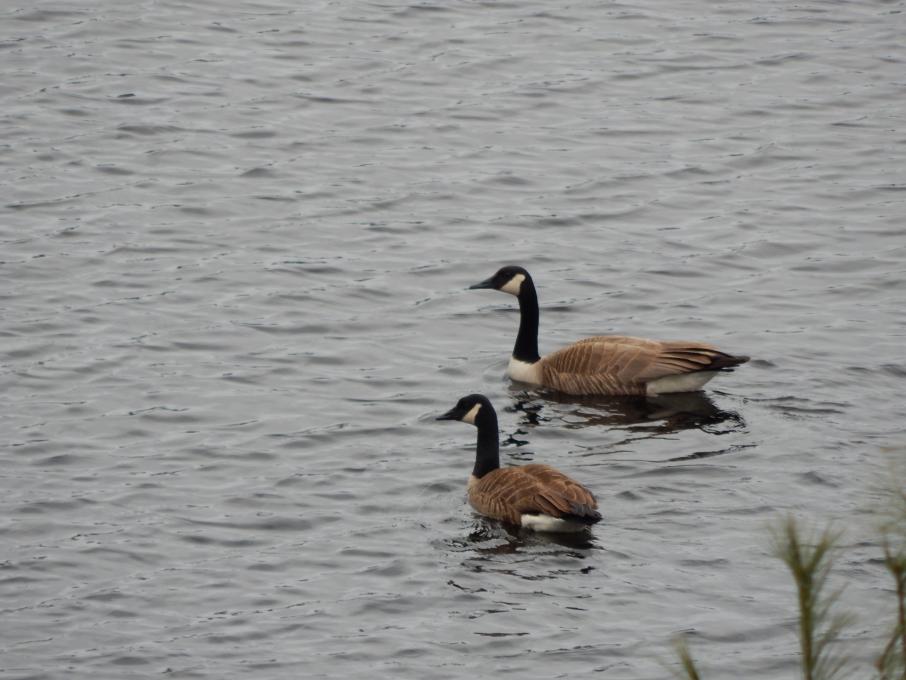The Cornell Lab Bird Academy › Discussion Groups › Joy of Birdwatching › Activities: Exploring Bird Habitats
-
I am thinking of 2 different habitats. One is developed by retail, restaurants, high school, and library with water nearby. That habitat attracts Canada Geese that like the water and the surrounding grass areas. A Great Blue Heron also appreciated the water. A hawk, maybe red shouldered hawk, flew in to perch on some metalwork. The second habitat is less developed. It is a metropark with a pond which caters to walkers and children playing. There I see red-winged blackbirds and sparrows in the brown shrubs and plants around the pond. I also see mallard ducks swimming in the pond.
-
I'm fortunate enough to live in Brooklyn, and New York City has some amazing opportunities for birding. 1) Jamaica Bay Wildlife Refuge hosts shore birds, waterfowl, and song birds within its very diverse ecosystem. Fall migration was an exceptionally spectacular time to bird there with all the species of birds I was able to see. 2) Within Central Park's Ramble -- you wouldn't find shorebirds, but one could find waterfowl in the ponds and songbirds in the wooded areas.
-
Hey all, I'm new to this whole discussion thing so I'm just going to give it my best shot... In briefly looking at the species found near Rodger Road AZ versus Mt Lemon AZ, the most obvious difference I found was that Rodger Road had a multitude of water birds, whereas Mt Lemon had a lot more mountain birds such as woodpeckers and warblers.
-
Activity 1: Visited a nearby park in a wetlands area. Many songbirds were present in the grassy area with trees set far back from the water including American Robins, Black-and-white Warbler, Northern Flicker, Golden-crowned Kinglet. These birds were not seen in the tidal mudflat area where other bird species were present including Mallards, Northern Shovelers, a Little Blue Heron, Great Egrets, Great Blue Heron and Herring Gulls. Activity 2: Sevenoaks must have a large pond/waterbody that is frequented by the many geese, swans, various duck species and all the shorebirds listed. There must also be a nearby field and brush area where the ring-necked pheasant lives. There are also songbirds here so there must be trees/forest in the area. At Down House I noticed there are no shorebirds such as ducks and geese, so I assume there is no water body in the area of this hotspot. There are predominantly songbirds here, so I assume there are trees/a forest to provide their habitats. And perhaps there are fields and open areas that attract raptors such as the Common Buzzard and Eurasian Kestrel.
-
I don't know either of the UK hotspots at all and am not very familiar with species in the south of England but thought I would give it a go: At first glance, Down House looks to support smaller song bird species mostly, whereas Sevenoaks supports songbirds as well as many wading/swimming birds, so I would guess that Sevenoaks has more or larger body/bodies of water. There are many geese, ducks, grebes, swans at Sevenoaks. Down House species have starlings, blackbirds, finches, doves as well as crows and gulls. At a guess I would say Down House would be more of a developed/urban area as the species listed there in my mind are better adapted to those areas.
-
Activity 2: Ive never been to Arizona. But just looking at the bird species found at Roger Road and Mt Lemmon, I can take an educated guess at the types of habitats at these locations. Some of the bird species are the same and some are different. The different species i see are at the Roger Road location and they consist of waterfowl, shorebirds and wading birds. This means there is a some water habitat located here. The Roger Road location and the Mt Lemmon location also had some similar bird species such as hummingbirds, songbirds, flycatchers, woodpeckers and hawks and falcons among others. With these birds present, i can conclude confidently there is wooded habitat and maybe some open land habitat at both of these locations.
-
Activity 1: 2 different habitats near me would be the beach/sea shore and pine forest areas. These areas can be relatively close but the species found in them varies greatly. In the ocean/ sea shore habitat i see a bunch of shore birds like sanderlings, plovers and sandpipers. I also see gulls and pelicans flying around. In the pine forests, there are song birds like cardinals, various warblers, chickadees and nuthatches to name a few.
-
My backyard adjoins a wooded area of mature deciduous trees where I enjoy over a dozen backyard songbirds. About 1-1/2 mile away my friend lives near a lake. When we go walking on the nature trail around the lake, we've seen great blue heron, wood thrushes, egrets, ducks, swans, and Canada geese.
-
Activity 2: Looking at the list of birds in the location of Down House and Sevenoaks, I did recognize the differences with the two when it came to the habitat and bird species. For Down House I noticed that the birds living there are mostly songbirds, Pigeons and Doves, woodpeckers and Raptors. What stood out to me the most of a bird is Rose-ringed Parakeet that is considered a parrot. They orignate in Africa and South Asia and was brought over to Europe and Japan and they now live and breed in those areas. The habitats are mix of Forest and Open. Sevenoaks is more towards Aquatic Habitat seeing Waterfowl, wading birds, and shorebirds.
-
I live in an urban area just a few blocks from a large park and a lake. My regular walk starts with a neighborhood, where I often see black capped chickadees, dark eyed juncos and American Robins. Then I enter the park and see song sparrows, hummingbirds and Northern Flickers. Then as I walk along the lake, I'll see mallards, Canada Geese and, now in summer, barn sparrows or in winter many species of duck. There are also lots of red winged blackbirds. Then I return home through the neighborhood, seeing the common birds, like Rock Pigeons, Glaucous Winged Gulls flying from the lake to the local Puget Sound, and, of course the ubiquitous American Crow. All this in a 20 minute lunchtime walk! I'm really fortunate to live where I do.
-
I have a fairly big pond close to my house that has some marshy bits. It is surrounded by some coniferous and deciduous trees and close to some open fields. It has a variety of birds including red winged blackbirds, song sparrows, grackles, robins, tree swallows, goldfinches, a blue heron occasionally, mallards, Canadian geese and others. Down at the lake, about 15 minutes away there are a wide variety of birds, from swans, wood ducks, ibis, herons, gulls and other shore birds to yellow warblers, scarlet tanagers, blue jays, cardinals, bank swallows, mergansers, loons sapsuckers and woodpeckers. Birds are everywhere. Sometimes great varieties of birds are fairly close if you change the habitat a little.
-


 I found different habitats and very different birds near my house: in a small river I observed a Green Ibis (20.02.21), in a park a Grayish Saltator (30.12.20) and a Yellow-headed Caracara (02.05.21) that I think that lives in the buildings of a mall. Curridabat, San José, Costa Rica.
I found different habitats and very different birds near my house: in a small river I observed a Green Ibis (20.02.21), in a park a Grayish Saltator (30.12.20) and a Yellow-headed Caracara (02.05.21) that I think that lives in the buildings of a mall. Curridabat, San José, Costa Rica. -
I'm watching a couple of black-chinned hummers in my back yard. Last year I set up 2 feeders and this year (with my new binocs) I'm following a male & female that I hope to see some courting activity! They have been around for a couple weeks now and this morning I finally got a flash of that beautiful magenta chin in the male. I have on order a bird bath and fountain for them. They have on occasion got close as I sat and read near a feeder. They don't seem to mind when my dog lays nearby in the yard too. I someday hope to entice with my hand feeder......patience! I always grab my binocs when I should grab the camera. I live next to the little park in my subdivision and hear so many song birds but such a hard time getting a good view through the leafy trees and they are quick to move. A short walk away is more desert/field area and different species and the surrounding areas are farm/ranch fields with plenty of raptors. Learning to identify is a slow process but so much fun!
-
Red shouldered hawk (I think) and Black-necked stilt - Myakka State Park.


-
Scrub Jay - Oscar Scherer Park

-
Oscar Scherer in Osprey, FL is home to the scrub jay. I have been lucky to have seen 5 of these recently. The terrain is mostly bushes from 3 to 6 feet w scattered trees. One bird serves as the lookout on the bush while the others feed. Myakka State Park is not far from Oscar Scherer, but the environment is totally different. Dense trees and shrubs through most of the park. Red shouldered hawks, and other rapters abound. Several lakes, so there is an abundance of water fowl—herons, spoonbills, and anhingas are just a few. Not an environment for scrub jays.
-
I live on the edge of a mixed forest in the US Southeast - lots of birds that go into the edges of woods: thrashers, woodpeckers, nuthatches, titmice (titmouses?). Nearby is a small lake: ducks, geese, and at least for a time, a great blue heron. Some of the woods-dwellers go over there, like the jays and mockingbirds too since the trees are so thick right around the lake.
-
My backyard has the typical neighborhood birds: robins, cardinals, blue jays, mourning doves, grackles, sparrows, crows, woodpeckers. The area around my house is lawn and some trees. On the other hand, we visited a protected waterfowl production area last week. Osprey, American coot, blue heron, teals, mallards, and more. We are blessed to live in an area with several state parks and protected nature areas nearby (Aldo Leopold country!) As we begin this new birding journey we plan to explore many different habitats.
-
I completed Activity 2, Option 2 - Two spots outside London: Down House (home of Charles Darwin) and Sevenoaks (a nearby wildlife reserve).
- Can you see differences in the types of birds at those two locations? Yes! First, there are many more species sighted at Sevenoaks. Second, the birds at Down House are smaller, while the birds at Sevenoaks are larger.
- Can you use which species are present to conclude anything about the type of habitat at each location? Yes! I would conclude that Sevenoaks has a lake or pond since there are so many waterbirds (i.e., ducks). I would also guess that perhaps people feed the birds at Down House since the species are ones that tend to be seen where there is a lot of human activity (i.e., pigeons).
-
My backyard: I hear a lot more than I see recently. Crows in the distance, robins and cardinals nearby, woodpeckers drumming. Hardly any of the usual nuthatches, blue jays, hairy, downy and red-bellied woodpeckers have been frequenting the feeder. Fresh seed put in last week has hardly been touched. Bass Ponds, Hennepin County, Minnesota: Again, don’t hear much and see even less. Really big area. I wouldn’t be surprised if more birds were in the remote areas.
-
My backyard: Mature trees, one of which is dying, some bushes in the Murphy’s yard where small birds hang out in between trips to the feeders. Also, some rhododendron bushes, in which I’ve never seen a bird. Small yard has direct sun about six hours a day. Two scotch pines provide mottled shade. Two feeders, one with shelled peanuts, the other with a mix with a lot of sunflower seeds. The Murphy’s also have feeders, I’m not sure what they use. The only thing that I think makes our yard appealing to the birds is the proximity of cover to the food and a birdbath. Bass Ponds: Minnesota River valley, extremely wide and flat flood plane with mature vegetation and lots of water. Would seem to be ideal spot for water birds. Also lots of trees on the bluff edges provide cover and nesting for woodpeckers and songbirds.
-
The first is the area around my house and neighborhood. It mostly its open with scattered trees. So we have typical birds like robins, sparrows, crows and juncos. Near our house we have some house finches. In the boulevard between the roads I can see killdeer. For my second area I went to a park reserve nearby where there are several lakes and ponds. In the land between the water I can see all of the same birds as above but in the ponds I was able to see Canada geese, Mallards, a hooded Merganser, a green winged merganser and I think a Ring necked duck. These last 3 were likely migrating thru but I will have to check back to be sure they are not residents. Obviously the birds stick to the area to which they are most adapted. They were all foraging in their particular way. The robins are looking for worms and maybe some berries. The ducks are getting plant material from the pond. It is really quite true to say that if you want to find a particular bird you need to know what it eats and where that may be found.
-
1. Lake edge with muddy flats. Bonaparte’s gulls wading and swimming, eating in the water. Several ducks swimming, diving. 2. Tree lined trail leading to the lake. Tufted titmouse, northern cardinals in trees.
-
I live on a river not far from a grassy bay, so I often see shore birds and water birds: yellow leg sandpipers, snipes, nine different kinds of ducks including various divers and dippers, great blue herons, geese, loons. Also my favourite the red winged black bird loves the grassy bay. and well as king fishers and king birds zipping along the shore. Across the road from our rural home is hundreds of acres of forest so I have heard the wood thrush, various warblers, sparrows, finches and occasionally the barred owl and cat bird, broad winged hawk, eagle, hawk owl. Regularly wild turkeys cross our yard from the forest taking their daily walk to the river. I find it so much fun to now be able to identify so many of my feathered neighbours. Thank-you so much for these courses.
-



-
Wow! These are great pictures, Liz. Were they taken near your home? (And did you use a fancy camera or just your phone?)
-
Read More:
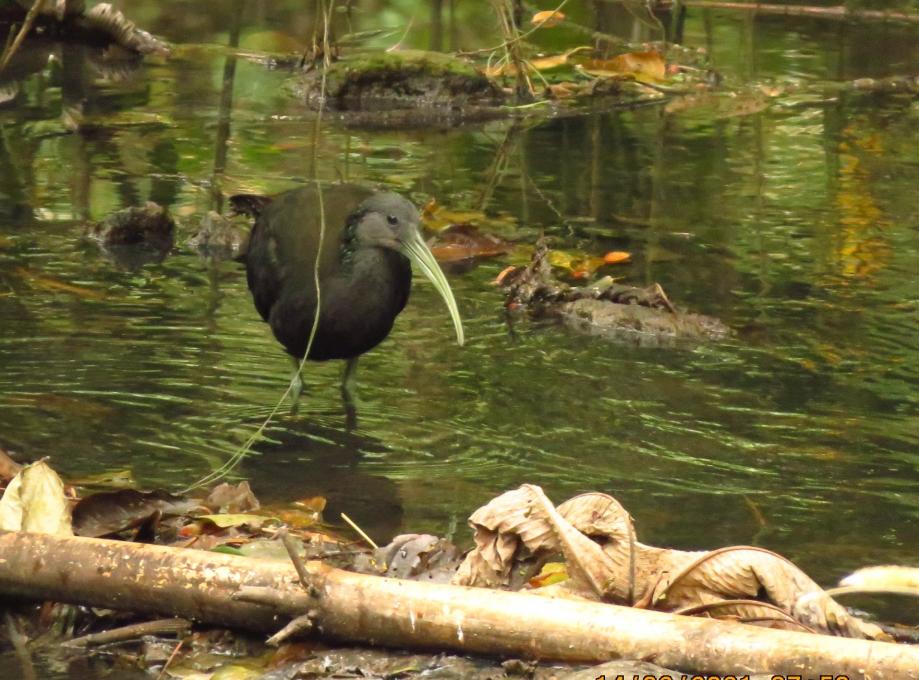
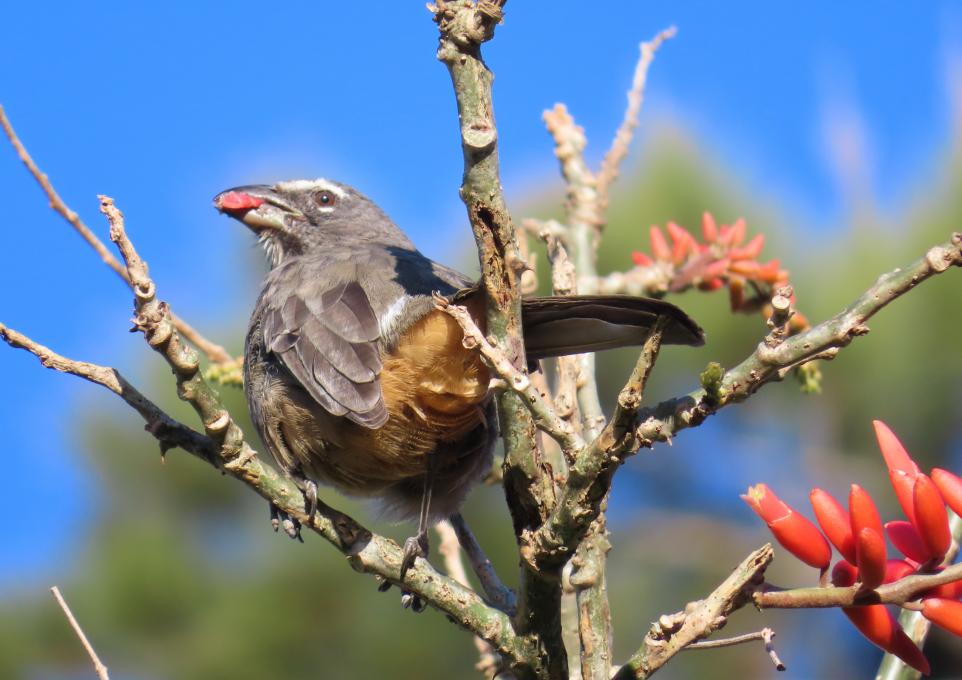
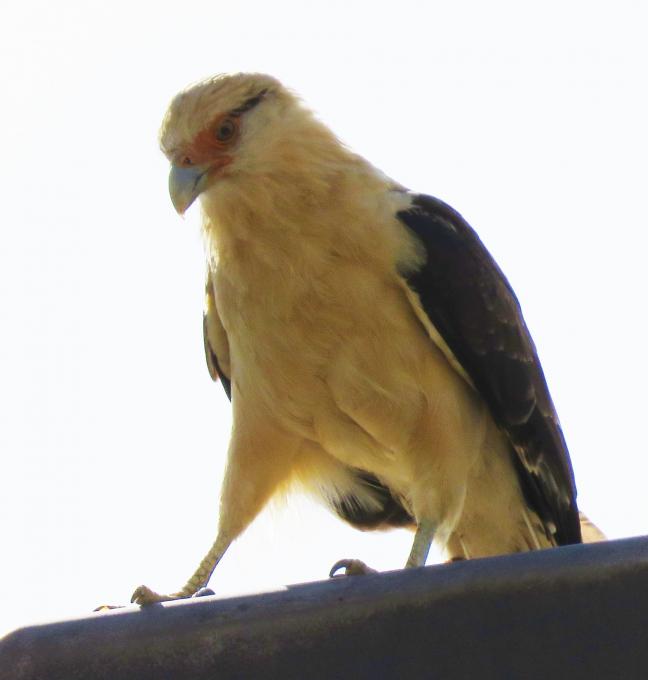 I found different habitats and very different birds near my house: in a small river I observed a Green Ibis (20.02.21), in a park a Grayish Saltator (30.12.20) and a Yellow-headed Caracara (02.05.21) that I think that lives in the buildings of a mall. Curridabat, San José, Costa Rica.
I found different habitats and very different birds near my house: in a small river I observed a Green Ibis (20.02.21), in a park a Grayish Saltator (30.12.20) and a Yellow-headed Caracara (02.05.21) that I think that lives in the buildings of a mall. Curridabat, San José, Costa Rica. 